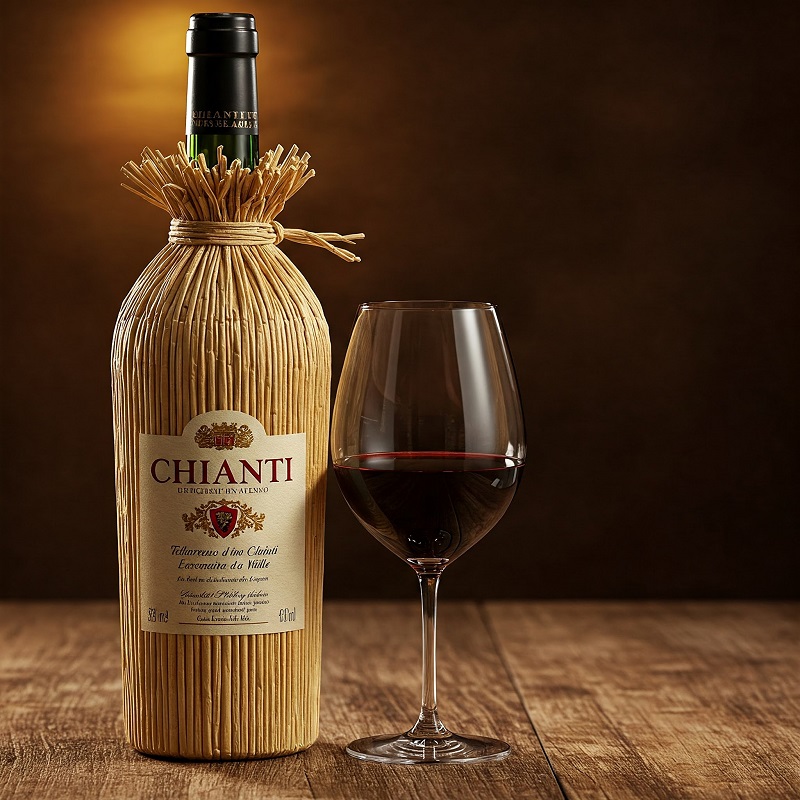 From Fiasco to Gran Selezione: The Evolution of Chianti
From Fiasco to Gran Selezione: The Evolution of Chianti
 2025-03-29 16:00:00
2025-03-29 16:00:00
Chianti is an Italian dry red wine from the Sangiovese grape in the Tuscany region. It is more than just a wine, it is a journey through the history, culture and unique terrains of Tuscany. With its deep roots and unrivaled versatility, Chianti is a testament to the art of Italian winemaking: a wine that continues to be celebrated by enthusiasts and food lovers alike.
The Chianti wine region consists of several microzones of DOC and DOCG levels. The most highly regarded are the wines of the Chianti Classico consortium. This iconic red wine tastes of the region's rich history and terroir.
The Chianti region, a spectacular landscape of vineyards and olive groves, stretches between Florence and Siena. Within this picturesque region are seven different sub-zones: Chianti Classico, Colli Aretini, Colli Fiorentini, Colli Senesi, Colline Pisane, Montalbano and Montespertoli and each bringing its own unique nuances to the wines. These subzones differ in microclimate, soil composition and altitude, resulting in a surprising variety of flavor profiles.
Although Sangiovese is predominant, other grape varieties such as Canaiolo, Colorino, Cabernet Sauvignon, and Merlot may be included to add complexity and depth to the wine. Chianti wines undergo traditional aging in Slavonian oak barrels for 4-7 months, while higher quality wines such as Chianti Riserva require at least 24 months of aging in oak.
The Chianti classification system ensures quality and authenticity:
Chianti offers a diverse range of flavors reflecting the unique terroir of each subzone. Common tasting notes include:
The history of Chianti goes back centuries, intertwined with the history of Tuscany and the Medici family. In 1716, Cosimo III Medici, Grand Duke of Tuscany, issued a decree recognizing the Chianti region as the official source of Chianti wine. This marked the beginning of Chianti's prestigious reputation. Historically, it is associated with a squat bottle encased in a straw basket called a fiasco. Nowadays, however, the fiasco is only used by a few producers of this wine; Chianti is mostly bottled in more standard-shaped wine bottles.
In the 19th century, Baron Bettino Ricasoli revolutionized the composition of wine by establishing Sangiovese as the dominant grape variety. Later, in 1932, the Italian government expanded the Chianti region, further cementing its place as a symbol of Italian winemaking.
It should be noted that Chianti is often seen as a more affordable and budget-friendly option, due to the blending of Sangiovese with other grape varieties. Despite the exceptional value of this wine, it is worth comparing it to other prestigious Tuscan wines such as Brunello di Montalcino and Vino Nobile di Montepulciano.
Brunello di Montalcino, made exclusively from the powerful and aging-resistant Sangiovese Grosso grape, is known for its depth and complexity, making it a premium and often more expensive choice. In contrast, Vino Nobile di Montepulciano has a harmonious balance, offering elegance and finesse with a character similar to Brunello, but at a more affordable price point.
Chianti's brilliant ruby color sets the stage for a symphony of flavors. Its signature acidity and firm tannins make it an ideal partner for robust Italian fare. Think: perfectly roasted meats – beef, lamb, or pork – their smoky edges echoing the wine's complexity. Or consider the sharp, nutty notes of aged cheeses like pecorino, grana padano, or parmigiano reggiano. And, naturally, the timeless pairing of Chianti and pasta, a match made in culinary heaven.
From its humble origins in the hills of Tuscany to its current status as a world-class wine, Chianti continues to enchant wine lovers around the world. Whether enjoying a classic Chianti Classico or exploring a Gran Selezione, each bottle is a sensory journey into the heart of Tuscany's winemaking heritage.